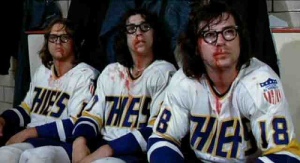
On our refrigerator we have an autographed photo of Detroit Lions quarterback Shaun Hill. Pepe liked him when he played for the 49ers and he met someone on HP, I will keep his name private if he wishes, who actually knows Shaun. He was at Shaun’s wedding and coached him when he was in Little League.
Shaun Hill was a star quarterback in a little town in Kansas, and wasn’t recruited to many colleges, so he had to play at a junior college. He got his big chance at the University of Maryland. As a senior, he led his team to a 10-2 record and the Orange Bowl — and Maryland almost never plays in big bowl games. Not bad for a kid who wasn’t recruited much.
Then, he wasn’t drafted in the NFL. He made the Minnesota Vikings’ roster as a free agent, then moved on to the 49ers. He got a chance to play there, starting the last month of the season in 2007. He started nine games in 2008, putting up solid numbers (2,000 yards in a little more than half a season, 13 TDs and 8 interceptions, for a quarterback rating of 87.5, which is excellent.)
Despite his good year, the 49ers were committed to their No. 1 draft pick, Alex Smith, who had a big contract, while Shaun didn’t, and Smith ended up starting most of the games last year for the 49ers. Shaun played decently enough again, but that was the direction the 49ers went (Interestingly the coach who made that decision, Mike Singletary, several times this past season couldn’t decide if he preferred Alex Smith or Troy Smith, and he was ultimately fired, partly for his poor handling of the quarterback positions. Meanwhile, Alex Smith is expected to leave the team as a free agent.).

Shaun saw the handwriting on the wall and accepted a trade to Detroit in 2009. Again his tough luck continued. After starter Matthew Stafford got hurt, Shaun again played well, better than many first string quarterbacks, but had his arm broken on a tackle. He only missed about a month and came back and led the Detroit Lions to their best season in many years, leading them to wins in their last two games. The Lions won 6 games, the most they had won in three years. He passed for 2,600 yards, had 16 TDs, 12 INTs and a QB rating of 81.7.
And still, very few people have heard of him. He has always had to fight to get onto teams, first because he came from a small town in Kansas, then because he wasn’t that highly regarded in college, then because he’s never had a real chance in the NFL or played for a good team. But his career QB rating of 84.6 is better than a lot of “stars” such as Eli Manning or Mark Sanchez. His career record as a starter is 13-13, mostly playing for bad teams with poor defenses. He’s probably the best backup quarterback in football and could probably start for at least half a dozen teams.
What’s more than being a good football player, our friend tells us he is a good guy. Shaun suffered a terrible tragedy this week when his father fell off the roof while working on his barn and was killed. He was only 60 years old. Every bit of that toughness that Shaun showed to stick around the NFL when he was never highly regarded, and to come back and play a month after having surgery on a broken arm is kid stuff compared to losing a parent, especially in such a tragic way. We wish him well in his time of need and send him our condolences. And we will continue pulling for him to succeed.
And his photo remains in an exulted spot on our fridge.










